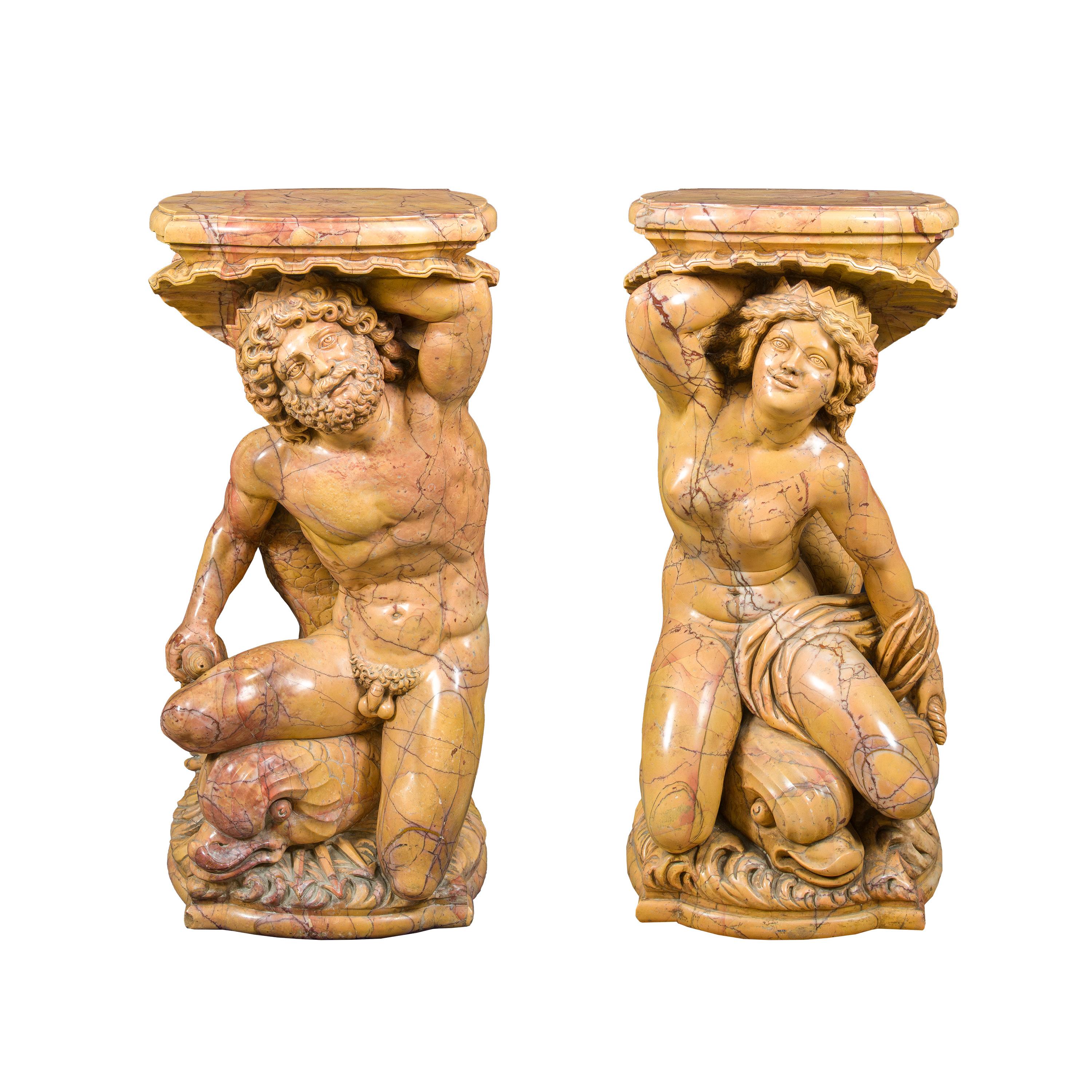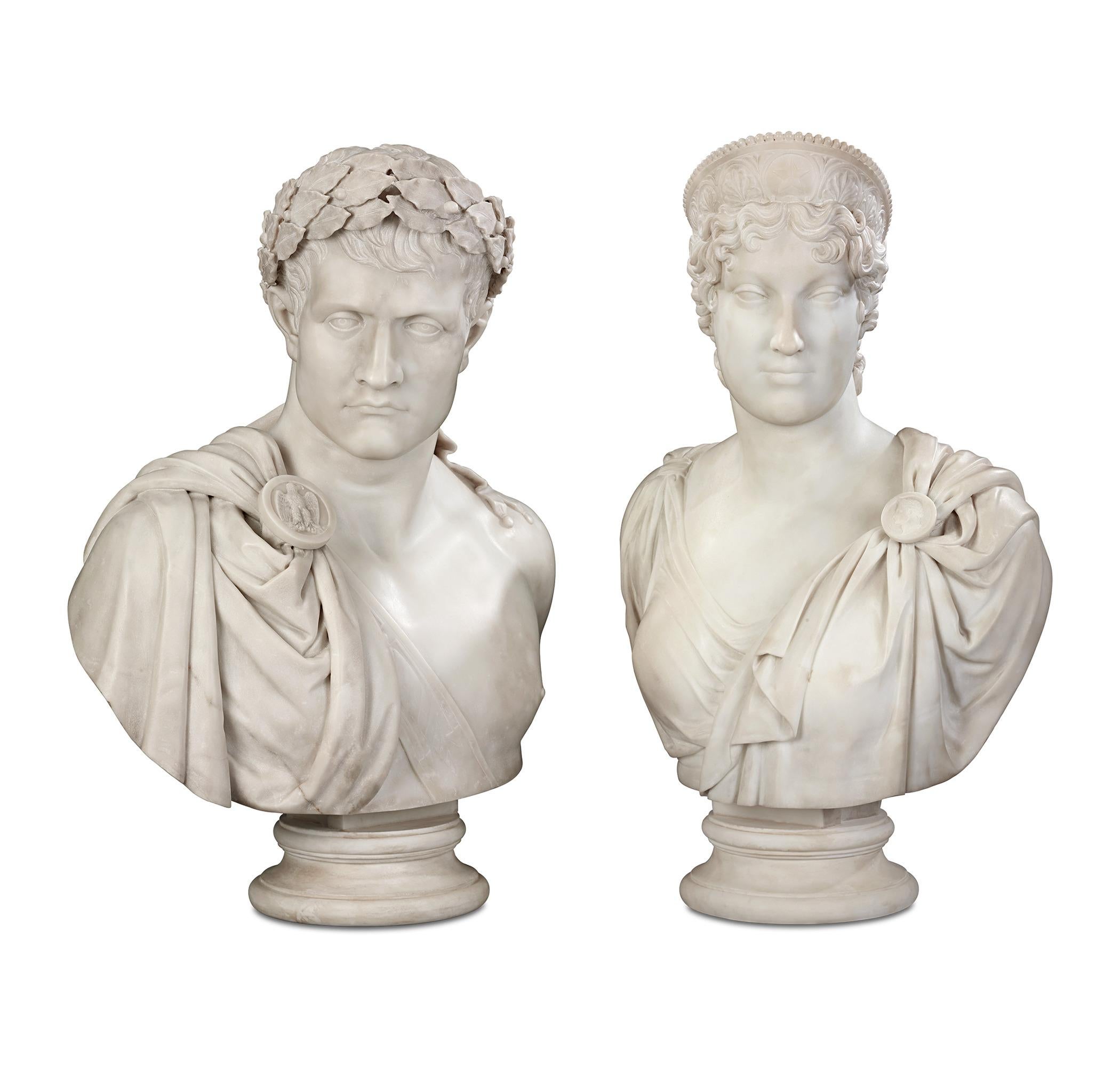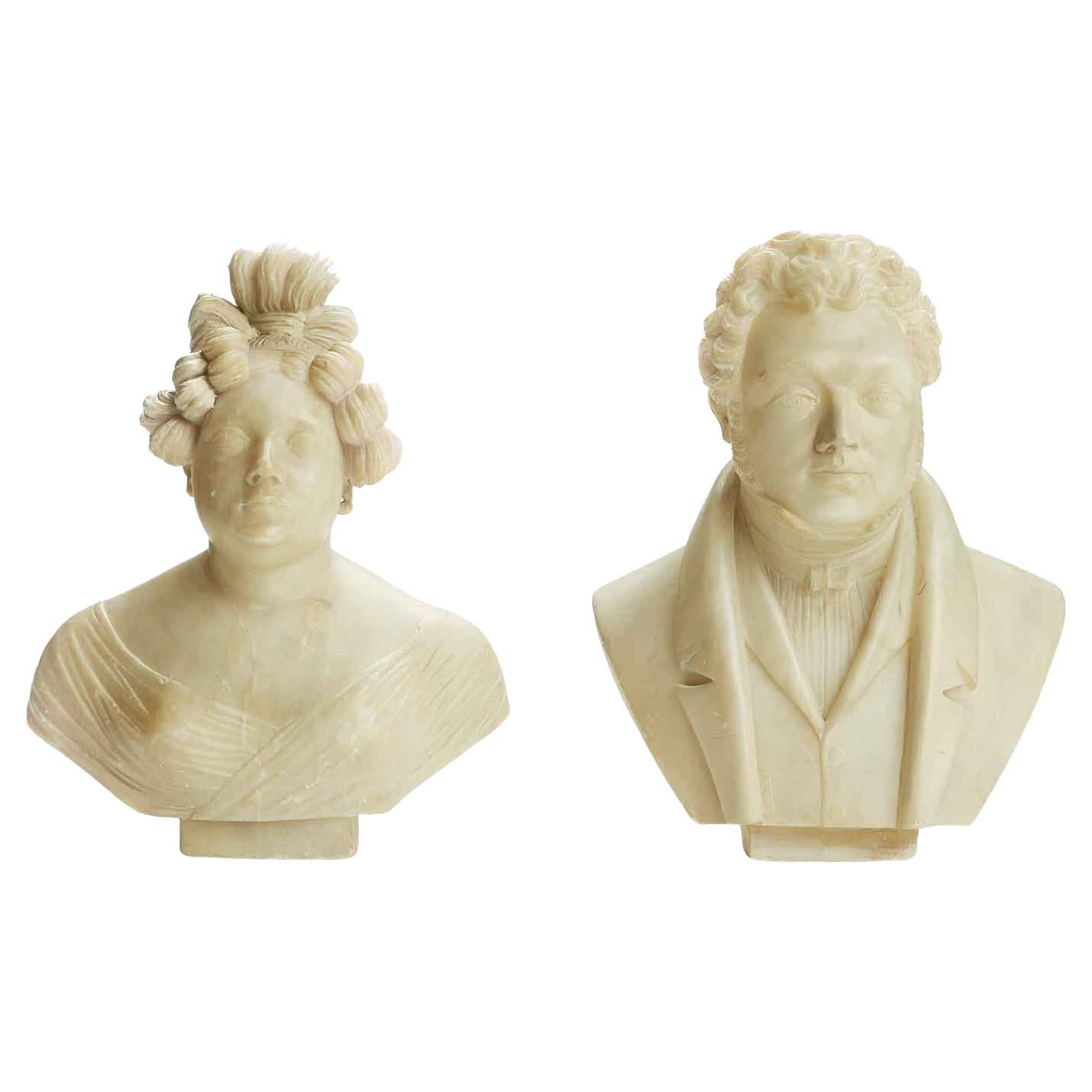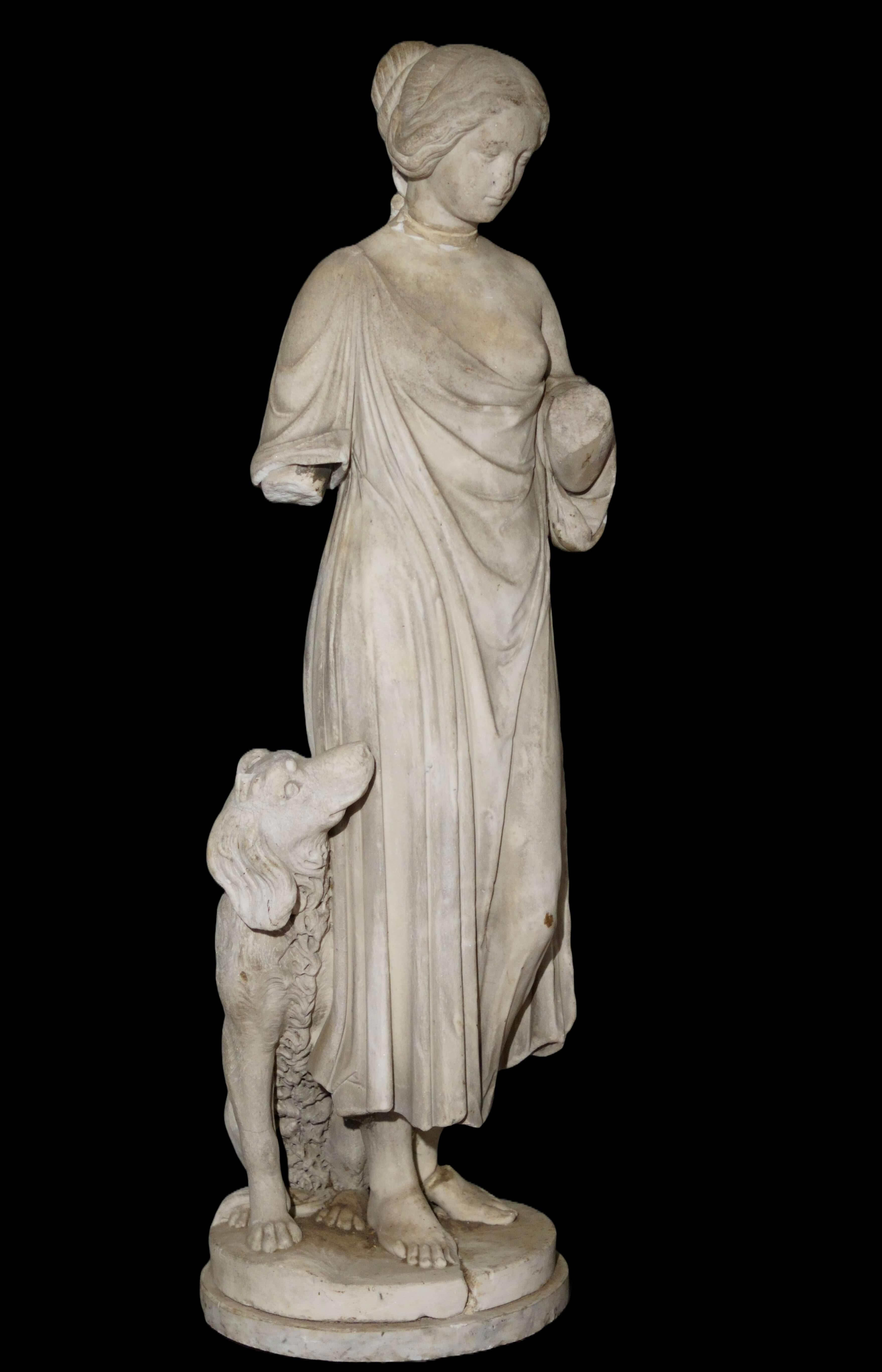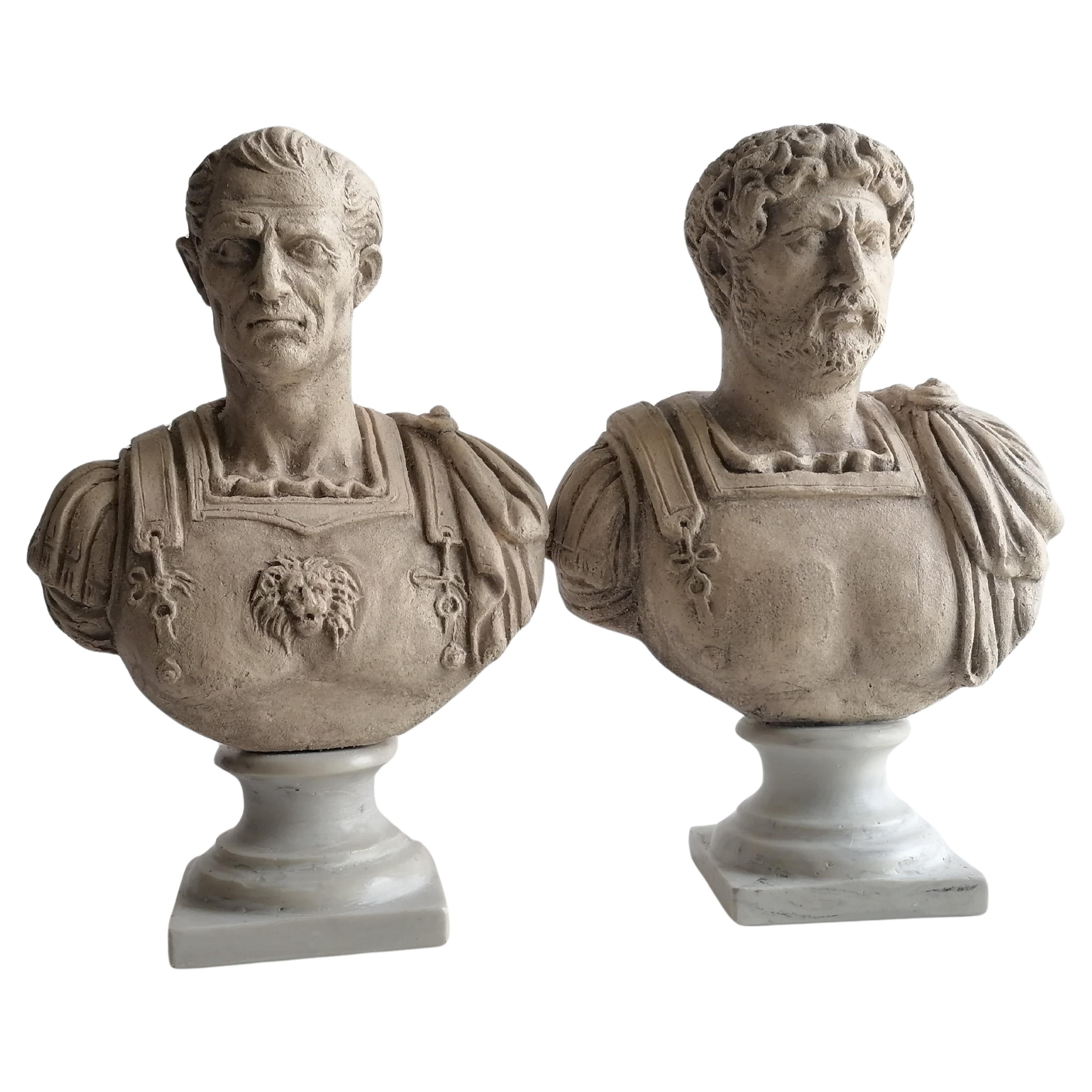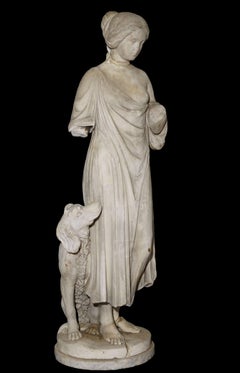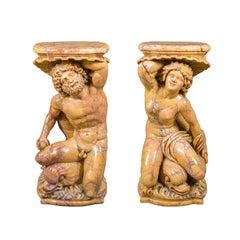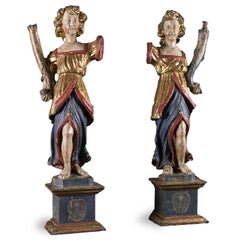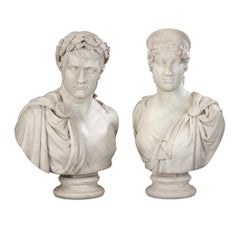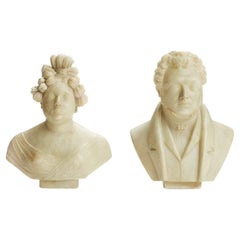Items Similar to Pair of Antique Yellow Marble Profiles Roman Empresses 17th Century
Video Loading
Want more images or videos?
Request additional images or videos from the seller
1 of 13
UnknownPair of Antique Yellow Marble Profiles Roman Empresses 17th Centurycirca 1630s
circa 1630s
$9,484.77
£7,098.32
€8,000
CA$13,085.06
A$14,551.13
CHF 7,642.57
MX$177,902.16
NOK 95,233.72
SEK 89,779.68
DKK 60,899.97
About the Item
Pair of early 17th-century medallion profiles in antique yellow marble and onyx
Pair of medallions depicting Agrippina and Faustina, Rome, 17th century.
Rare and important ancient yellow veined marble reliefs from Numidia applied on striped alabaster from Villa Palombara-Rome.
The portrayal, inspired by antiquity, is to be placed in that profane and celebratory production of classical figures and allegorical of their virtues, linked to the cultured and refined collecting that flourished in Renaissance humanistic culture and was also widespread in the Baroque period. In ancient Rome that of portraiture was a true cult expressed through marble busts and medallions, displayed in series in family galleries, juxtaposing ancestors with younger members to perpetuate family memory and virtues.
Their extremely fine workmanship, small size, fine materials, and extreme quality place them at the dawn of the 17th century, very close to Renaissance productions.
On the back an old inscription designates them as the portraits of Agrippina Major and Faustina. Agrippina Major, daughter of Emperor Augustus and wife of Germanicus, by whom she had Caligula, was a Roman noblewoman, belonging to the Julio-Claudian dynasty. Annia Galeria Faustina, better known as Faustina minor, was a Roman empress, wife of Emperor Marcus Aurelius and mother of Commodus.
Villa Palombara alabaster is a flowering alabaster whose name comes from some findings made in the archaeological excavations at Villa Palombara, near Rome. The ancient yellow marble of Numidia, used in Roman times, came from quarries in the ancient city of Simitthus, now Tunisia; exported to Italy, it was widely used for wall coverings, colonnades and floors. The quarries were exhausted around the 3rd century, so much so that later artifacts were made from materials recovered from the ruins.
About the Seller
4.5
Vetted Professional Seller
Every seller passes strict standards for authenticity and reliability
Established in 1997
1stDibs seller since 2024
17 sales on 1stDibs
- ShippingRetrieving quote...Shipping from: PISTOIA, Italy
- Return Policy
Authenticity Guarantee
In the unlikely event there’s an issue with an item’s authenticity, contact us within 1 year for a full refund. DetailsMoney-Back Guarantee
If your item is not as described, is damaged in transit, or does not arrive, contact us within 7 days for a full refund. Details24-Hour Cancellation
You have a 24-hour grace period in which to reconsider your purchase, with no questions asked.Vetted Professional Sellers
Our world-class sellers must adhere to strict standards for service and quality, maintaining the integrity of our listings.Price-Match Guarantee
If you find that a seller listed the same item for a lower price elsewhere, we’ll match it.Trusted Global Delivery
Our best-in-class carrier network provides specialized shipping options worldwide, including custom delivery.More From This Seller
View AllLarge Italian Neoclassical Marble Sculpture Allegory 18th century
Located in Pistoia, IT
Impressive neoclassical Carrara marble sculpture depicting the Allegory of Friendship and Loyalty, second half of the 18th century.
The sculpture depicts Friendship as a classical ...
Category
Late 18th Century Italian School Figurative Sculptures
Materials
Marble
Large Neoclassical White Marble Sculpture Venus Italica mid-19th century
Located in Pistoia, IT
Venus Italica, imposing sculpture in white Carrara marble, mid-nineteenth-century Roman atelier.
Antonio Canova made several sculptures depicting Venus. The first was made as compen...
Category
Mid-19th Century Italian School Figurative Sculptures
Materials
Marble
Altorilievo in Marmo della Montagnola Senese Profilo Siena XIV secolo
Located in Pistoia, IT
Altorilievo in marmo della Montagnola Senese raffigurante un profilo femminile a mezzo busto, Siena, XIV secolo.
L'altorilievo, nella tradizione senese del XIV secolo, si caratter...
Category
15th Century and Earlier Medieval Figurative Sculptures
Materials
Marble
French School of the 17th century Large Group in Terracotta
Located in Pistoia, IT
Large terracotta group depicting interior scene, northern France, second half of the 17th century.
The fine execution of this delightful family interior takes us back to the product...
Category
Late 17th Century Baroque Figurative Sculptures
Materials
Terracotta
White Marble sculpture Venus dei Medici Italy Florence mid-19th century
Located in Pistoia, IT
White Carrara marble sculpture depicting the Medici Venus, Florentine workshop, second half of the 19th century.
The Venus de' Medici is an original Greek Hellenistic marble statu...
Category
Late 19th Century Italian School Figurative Sculptures
Materials
Marble
Panel in Scagliola Manifattura Carpigiana mid-17th century "St. Michael"
Located in Pistoia, IT
Carpi, mid-17th century, scagliola panel.
The panel, in black and white two-tone, features insertions of polychrome marbled elements and a central scene depicting St. Michael defeat...
Category
17th Century Baroque Figurative Sculptures
Materials
Slate
You May Also Like
Pair of 19th/20th baroque style figure sculptures- Poseidon and Amphitrite
Located in Varmo, IT
Pair of yellow marble vase-holder sculptures - Poseidon and Amphitrite. Italy, 19th-20th century.
44 x 44 x h 90 cm each.
Entirely in yellow marble carved in Baroque style. Depicting Poseidon and Amphitrite holding a horizontal vase...
Category
Late 19th Century Baroque Figurative Sculptures
Materials
Marble
Pair of Italian Baroque Angels 17th Century Sculptured Lacquered and Gilded Figures
Located in Milano, IT
Pair of Angels, Tuscan Sculptures with Cornucopias from the 1600s hand-carved from stone pine wood, lacquered and gilded from Central Italy, from a private villa in Siena; they are...
Category
Late 17th Century Baroque Figurative Sculptures
Materials
Wood
Pair of Carrara Marble Busts of the Emperor Napoleon and Empress Marie Louise
Located in New Orleans, LA
"I am a true Roman Emperor; I am of the best race of the Caesars—those who are founders." –Napoleon Bonaparte, 1812
Among the most iconic and celebrated figures in history, Napoleon...
Category
19th Century Figurative Sculptures
Materials
Marble
Coppia Di Busti Italiani Scolpiti in Alabastro 1834 Livorno Giuseppe Benassai
Located in Milano, MI
Elegante Coppia di sculture figurative italiane in alabastro intagliato a mano del 1834, una coppia di busti toscani raffiguranti due figure di gusto neoclassico, in abiti ottocentes...
Category
Antique Mid-19th Century Italian Neoclassical Revival Figurative Sculptures
Materials
Alabaster
Coppia di busti in Ceramica chiara- G. Cesare e Adriano imperatori-made in Italy
By Laboratorio Todini
Located in Tarquinia, IT
Giulio Cesare, Adriano busto, Scultura, busto imperatore, Busto Giulio Cesare, busto imperatore Augusto, busto romano antico, arte romana, arte classica, arte greca, busto, busto cre...
Category
Early 2000s European Classical Roman Busts
Materials
Ceramic
Pair of Classical Figurines, 18th Century
Located in Doylestown, PA
A pair of classical style figurines in painted terra cotta, French late 18th century. From the personal collection of Pierre Moulin, author of French Cou...
Category
Antique Late 18th Century French Louis XVI Figurative Sculptures
Materials
Terracotta
$1,250 Sale Price / set
66% Off
More Ways To Browse
Baroque Marble Sculpture
Marco Aurelio
Tayeba Lipi
Trois Sardines
Verdigris Wall Sculpture
Vincent Glinsky Sculpture
Vincent Glinsky
Virgen De La Caridad Del Cobre
Walt Horton Bronze
Wendy Saxon Brown
Wesley Fleming
Willem Degroot
William Debilzan
Wladimiro Politano
Alexis Silk Glass
Amber Cowan
Ancizar Marin Climber
Anne Drew Potter
